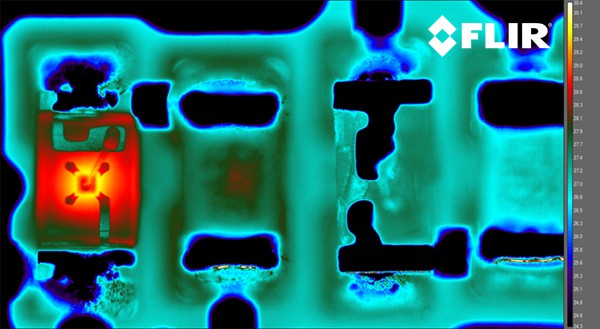IR cameras have been used for many years by scientists, researchers and R&D specialists in a wide range of applications, including industrial R&D, academic work and research, non-destructive and materials testing, as well as defense and aerospace. However, not all IR cameras are created equal. In some applications, advanced dedicated cameras capable of freezing fast movements are required to obtain accurate measurements.
IR cameras for scientific and R&D applications are powerful, non-invasive tools. Equipped with an IR camera, you can identify problems early on in the design cycle. So you can document and correct them before they become too serious and costly to resolve.
Thermography in an R&D environment
IR cameras use thermal radiation, which is not detectable by the human eye, but can be converted into an image showing thermal variations in an object or scene. Covering part of the electromagnetic spectrum, thermal energy is emitted by all objects with a temperature above absolute zero. This radiation increases with temperature. Flir IR cameras are used to capture and record thermal distribution and variations in real time. This enables engineers and researchers to accurately see and measure heat release, dissipation, leakage and other temperature-related factors in equipment, products and processes. Some of these cameras distinguish extremely subtle temperature changes of as little as 0.02°C. They incorporate state-of-the-art detection technology and advanced mathematical algorithms, guaranteeing high performance and precise measurements from -80°C to +3,000°C. The R&D camera ranges combine extremely high performance and precise temperature measurement with powerful tools and software for analysis and reporting. This combination makes them ideal for a wide range of research and thermal testing applications. In fact, there are two categories of IR cameras on the market today: cooled and uncooled. Component costs for both types of system can vary considerably, so it's extremely important to weigh up the pros and cons before making a choice.
See the full technical note in the document below.
Learn more: www.flir.com










 Media kit
Media kit









